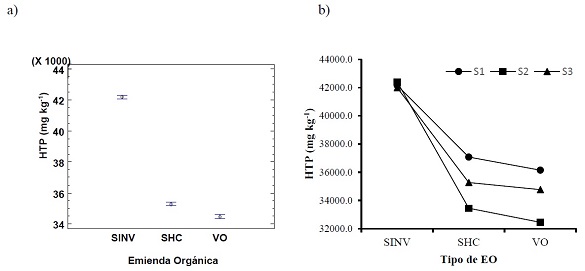Remediation of soils contaminated with hydrocarbons using humic substances from vermicompost
DOI:
https://doi.org/10.28940/terra.v41i0.1656Keywords:
humic substances, microorganisms, petroleum, remediationAbstract
Bioremediation with humic substances is one of the recent and promising techniques for the restoration of soils contaminated by hydrocarbons, but little information is available on its behavior in dif ferent types of soil. For these reasons, this research aimed to evaluate the removal of total petroleum hydrocarbons (HTP) in three types of soil with dif ferent textures (S1, S2 and S3) and treated with organic vermicompost amendments (cocoa husks, Theobroma cacao; rice, Oriza sativa; sugarcane bagasse, Saccharum of ficinarum; cow manure) and commercial humic substances (potassium humate). A randomized multifactorial experimental design (3 × 3 × 2) was proposed, which consisted of the type of soil, organic amendment (without vermicompost, with organic vermicompost, commercial humic substances) and microbial load (with microorganisms, without microorganisms). The results were analyzed using the ANOVA-Tukey tests in the Statgraphics CenturionTM V.18 program (α = 0.05) in order to evaluate significant dif ferences between treatments. The results show that S2 with the addition of organic matter had the highest removal (86% of HTP) af ter 60 days of incubation, compared to the treatment with commercial humic substances, which are related to the low bioavailability of the microorganisms. This behavior was also observed in S3 with a TPH percentage removal of 77.52 and 63.4% for S1. Finally, the cell growth rate was better in S2 with commercial humic substances. An average growth of 94 × 104 CFU g-1 of soil was obtained during the 60 days of evaluation of the experiment, and a maximum of 98×105 CFU g-1 of soil in the 45 days of treatment. To conclude, the use of vermicompost is adequate for clayey soils, since the degradation rates are higher in them. In addition, they represent a cheaper alternative to synthetic treatments and revaluation of organic waste.
Downloads
Publication Facts
Reviewer profiles N/A
Author statements
- Academic society
- Terra Latinoamericana
- Publisher
- Mexican Society of Soil Science, C.A.

















